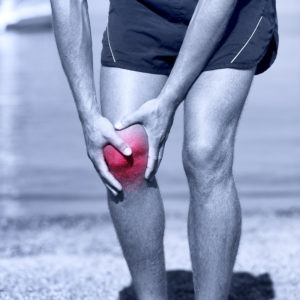 “Runner’s Knee” is a condition that gets its name because it often develops in runners and athletes who participate in active sports. It is categorized by pain and discomfort in the knee region, but what exactly is going on when the condition develops? Today, we take a closer look at the causes, symptoms and treatment options for runner’s knee.
“Runner’s Knee” is a condition that gets its name because it often develops in runners and athletes who participate in active sports. It is categorized by pain and discomfort in the knee region, but what exactly is going on when the condition develops? Today, we take a closer look at the causes, symptoms and treatment options for runner’s knee.
Causes and Symptoms of Runner’s Knee
The official medical diagnosis for runner’s knee is patellofeomral pain syndrome. The problem develops when nerves in the area sense pain in the soft tissues and bones around the kneecap. Considering that the condition has been nicknamed “runner’s knee,” it should come as no surprise that running is a common cause. However, the underlying problem is actually overuse and overexertion of the knee joint. If you do a lot of running, squatting or stair climbing, you may begin experiencing symptoms of runner’s knee. In fewer cases, runner’s knee may be caused by a misalignment of the kneecap in the joint, which can put abnormal stress on different parts of the knee.
Symptoms of runner’s knee include:
- Knee pain during exercise or activities that bend the knee
- Pain after sitting for a while with your knees bent
- A popping or cracking sound in your knee while moving
Diagnosing and Treating Runner’s Knee
Diagnosing runner’s knee involves having a specialist take a look at the knee and listening to your description of symptoms. Sometimes X-rays are taken to check for knee joint misalignment.
Treating runner’s knee is pretty simple, and it mainly centers around avoiding activities that stress the knee until pain has resolved. This doesn’t mean that you have to be inactive, just that you should try and switch up your exercise routine until pain subsides. For example, instead of going for a 5-mile run, jump on the elliptical, work on your upper body at the gym, or head to the pool and swim some laps. There are plenty of ways to stay active without overstressing your knee joints.
Other treatment options include, the RICE Method (Rest, Ice, Compression and Elevation) as well as anti-inflammatory or pain-relieving medications. Physical therapy and orthotic inserts have also shown positive results. Surgery is rarely necessary, and is only pursued if the knee doesn’t respond to conservative treatment options, and there’s a significant problem present, like bone spurs or knee joint misalignment.